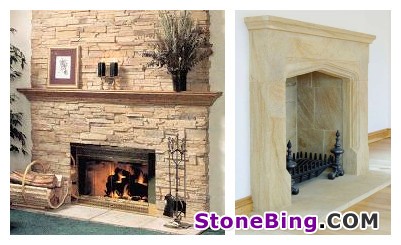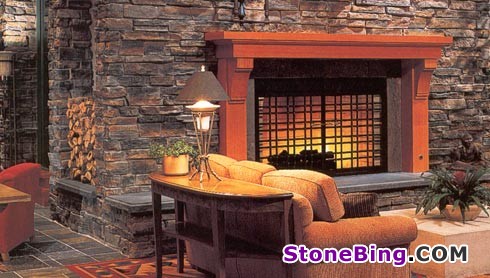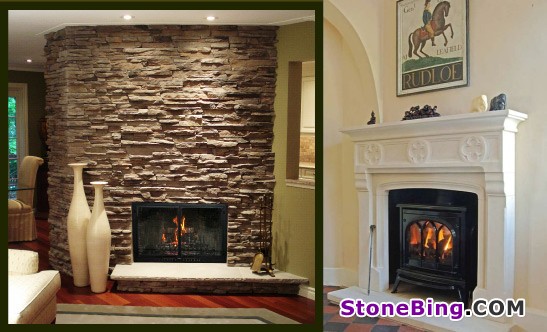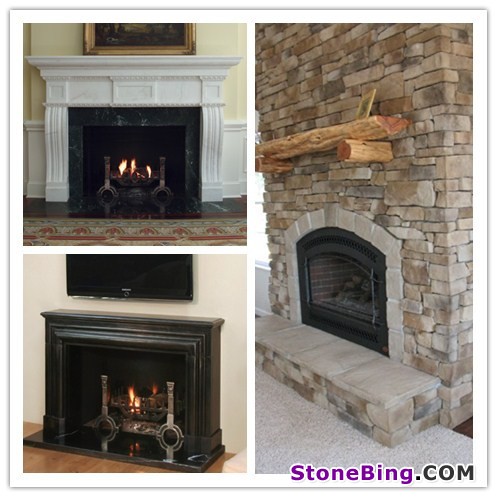
Though natural stone has been around since the beginning of time, it is typically more expensive, heavier, and harder to work with than cultured stone. Natural stone choices are also somewhat limited. Granite, Marble, Limestone, Slate and Travertine are the typical natural stone options. Cultured stone products, on the other hand, can be constructed to emulate many types of stone surfaces, and are typically much more vibrant looking and durable than natural stone products for fireplace projects.
Cultured stone is constructed using stone aggregates, dyes and lightweight cement. Cultured stones are available in many shapes, textures and colors and are designed to emulate many natural stones, including granite, river rock, limestone, etc. Most cultured stone manufacturers offer 50 year guarantees against cracking and fading.

Cultured Stone Fireplace
With natural stone, a fireplace is masonry block built and the natural stone is then attached to it. Building a masonry block fireplace structure is necessary to support the weight of the natural stone. This translates into significantly higher construction costs for a stone fireplace.
With cultured stone veneers, the mortar and cultured stone can also be attached directly to the masonry block walls of a fireplace, but in many cases a masonry block wall fireplace is not required. Cultured stone veneers can also be attached directly to lower cost, zero-clearance fireplace surfaces.
Zero-clearance fireplaces are much less expensive to build than traditional masonry block built fireplaces. Typically zero-clearance fireplaces are constructed by framing in a steel chimney flue with standard wood studding material, e.g. 2x4s. The fireplace frame is then sheathed with plywood.
Because of its light weight, cultured stone veneers can directly attach to these wood surfaces associated with zero-clearance fireplaces. All that is required is a metal lath to first be attached to the wood surface and a thin scratch coat of mortar applied. Once the mortar is dried, the cultured stone veneers can be attached.

Also due to its light weight and standard shapes, the cost of applying thin cultured stone veneers is much lower than natural stone. With natural stone, each stone has to be hand worked and fitted into place. This takes significant time and craftsmanship, which translates into much higher construction costs.
Another cost saving advantage of cultured stones is their shipping costs. Again, due to their light weight the costs associated with shipping them from the manufacturer to the jobsite are much lower than shipping natural stone.
Yet another advantage of cultured stone is that due to its availability in regular shapes and sizes more intricate stone fireplace designs can be implemented. As a matter of fact, part of the process when selecting cultured stone is designing the fireplace.
On the downside, cultured stone veneers are more moisture absorbent and when chipped leave a surface that is non-similar to the outside surface. Consequently they can require slightly more care and maintenance. Also, care has to be given to avoid repeating patterns when installing the product.
This said, cultured stone is a great alternative to natural stone. It looks and feels virtually the same as natural stone, and enables stunning stone fireplaces to be built at a fraction of the cost of natural stone.








